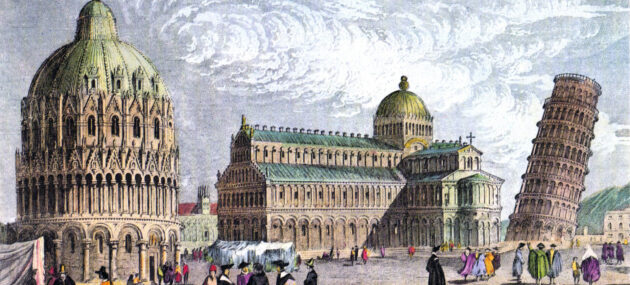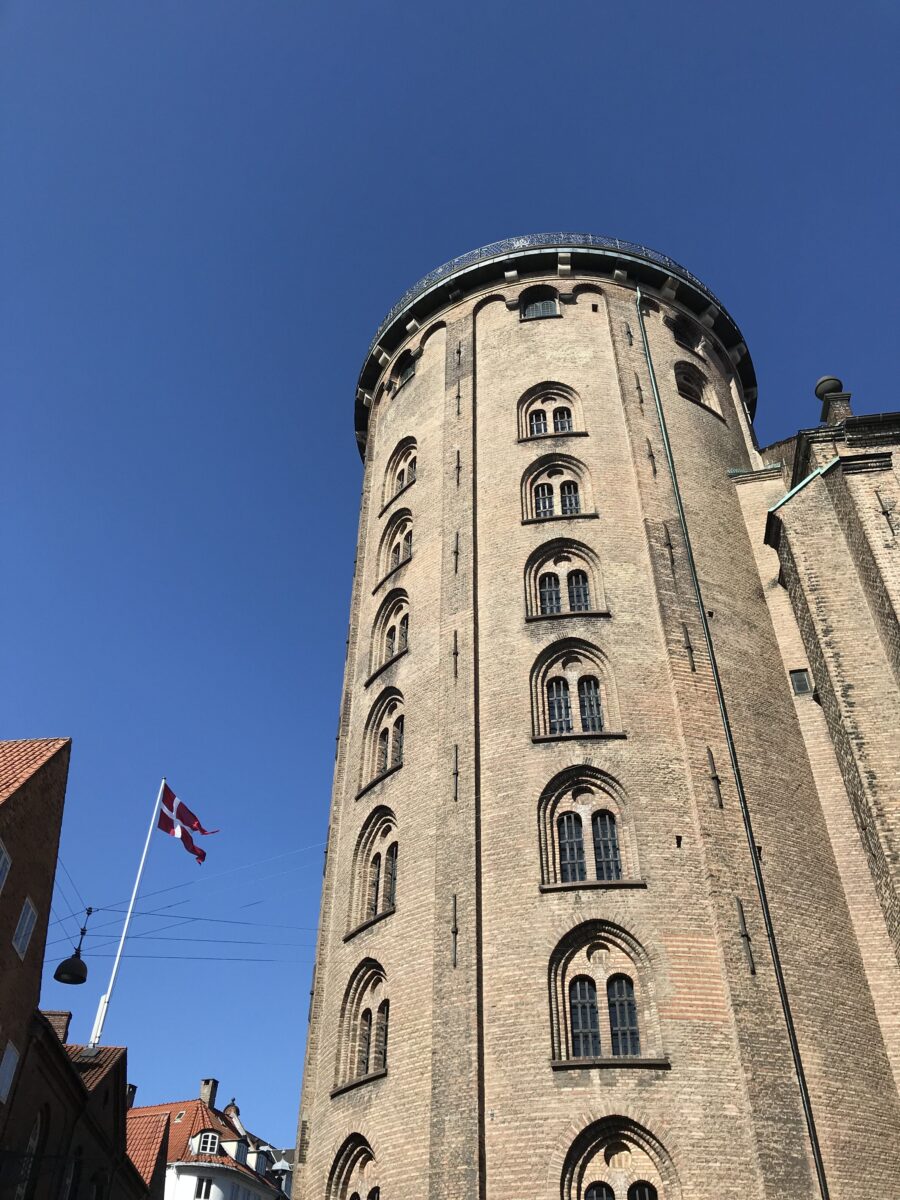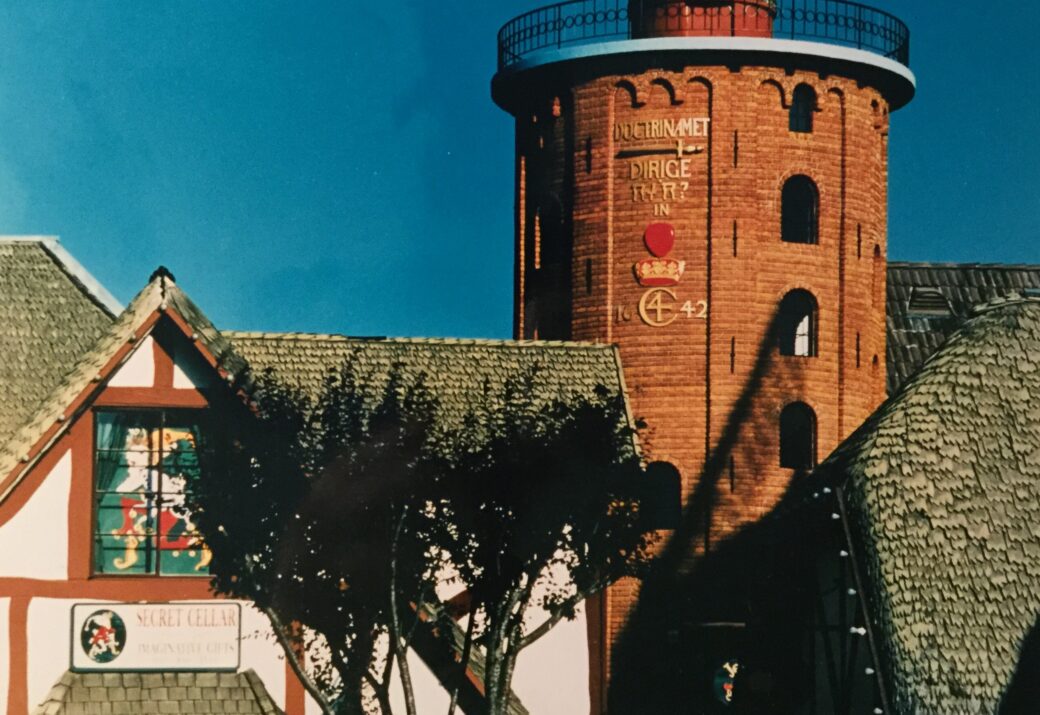This website uses cookies so that we can provide you with the best user experience possible. Cookie information is stored in your browser and performs functions such as recognising you when you return to our website and helping our team to understand which sections of the website you find most interesting and useful.

The Leaning Tower
In 2009, it was possible to read in the free newspaper Urban that the Round Tower was beginning to lean as a result of the earthquake that had hit southern Scandinavia in the early morning of 16 December 2008. “After the large earthquake in Denmark recently”, a professor from the Department of Geography and Geology at the University of Copenhagen was thus quoted as saying, “we initiated an inquiry of especially the old buildings in Copenhagen, and the results of this show that the Round Tower is not standing in the same way as before the earthquake”.
According to the professor, the soil beneath the Round Tower is very sandy, and therefore they had been particularly concerned for the old tower. “Unfortunately our misgivings were confirmed, for the subsequent calculations have shown that the Round Tower will continue to slant about 0.8 centimetres per year towards the west, if nothing is done to stabilise it”, he continued.

According to the article, the tourist organisation Wonderful Copenhagen had a more positive approach to the increasing inclination, because “if one for instance thinks of how famous the Leaning Tower of Pisa has become, this can create a lot of economic opportunities”, an employee was quoted as saying. And with reference to the tower’s tilt the article therefore summarised that, “It is already a tourist attraction in itself, but perhaps now, the Round Tower can become even more famous”.
April Fool!
The part with the earthquake was true enough, but let it be said at once: it was sheer make-believe that the tremor had affected the Round Tower. For the article in Urban was published on Wednesday 1 April and was as much an April Fool’s joke as when 13 years earlier the discount chain Netto had announced that it was about to open a new store in the Round Tower.
“Use the elevator; it brings you to the entrance at the top”, the advertisement said and further continued with the promising words: “On the way down you will find Netto’s entire vast selection of stable goods […] You can also expect a lot of price drops, it can hardly be avoided on the slanting floor of the store.” At least one customer fell for the story, but received a cup of coffee as consolation when showing up in vain with a bag of returnable bottles.
Eyes As Slanting
The April Fool’s joke in 2009 is, however, not the first time the Round Tower has been compared to its Italian colleague, which was added to UNESCO’s list of world heritage of outstanding universal value in 1987 along with the rest of the buildings on Pisa’s Cathedral Square or Piazza dei Miracoli (Square of Miracles) as an Italian poet has termed it. Thus, it is possible to find a couple of undated clippings from weekly magazines in the Round Tower’s collection wherein the writers have made merry over the fact that they have a famous tower and we have a famous tower.
“It is certainly also tempting to play with the idea to what extent the two towers are similar”
The merriest of them all is a small notice, which envisages the Round Tower being moved to Pisa so that the two towers can lean against each other and the tourists can compare the buildings. With reference to the largest dog in Hans Christian Andersen’s fairy tale “The Tinder Box”, the notice plays its trump card by stating that ”’Eyes as slanting as the tower of Pisa’ also sounds far more up-to-date than ‘Eyes as big as the Round Tower’.”
Similarities and Differences
So far as is known, the Danes have mostly been the ones who draw the parallels. And it is certainly also tempting to play with the idea to what extent the two towers are similar.
Among the similarities one finds that the tower in Pisa has seven arcades, which comes close to the seven and a half times the Spiral Ramp winds itself around the hollow core of the Round Tower. Furthermore, the arcades of the Leaning Tower are amply supplied with round arches made in the same Romanesque style as some parts of the Round Tower, just like Pisa is located in the Italian region of Tuscany, which has lent its name to the lesser-known style that has inspired the entrance portal of the Round Tower.
“For it is quite true: the radius of the Round Tower is larger at the top than at the bottom”
But it is also possible to spot the differences. The tower in Pisa, which was initiated several hundred years before the Round Tower, is constructed as a bell tower or campanile, while the Round Tower never had to house any bells. The bells calling people to service in the Trinity Church, which is built together with the Round Tower, thus hangs in a ridge turret or a bell spire. Additionally, the Italian tower is considerably taller than the Copenhagen one, about 20 metres, although the exact figure inherently depends on which of the sides of the Leaning Tower one measures the height from.
Leaning and Round
And then we have those characteristics of the two towers, which have been so fundamental to the perception of both of them that they have found their way into the names of the towers, namely the leaning and the roundness. What is a curious fact here, is, that one of the towers is known for being leaning but is also round, while the other is known for being round but is actually also leaning.
For it is quite true: the radius of the Round Tower is larger at the top than at the bottom, and therefore the outer wall leans “about a foot toward the street of Købmagergade, which can be observed by a sharp eye without aid”, as the art historian Frederik Weilbach (1863-1937) writes. A foot is just above 30 centimetres and therefore a great deal more than the 0.8 centimetres the April Fool’s joke in the newspaper describes. But as Weilbach continues to write:
“We will not blame the builder too much for it. Now that the cathedral tower in Pisa has become so famous for leaning, the Round Tower can at least lay claim to kind forbearance.”


